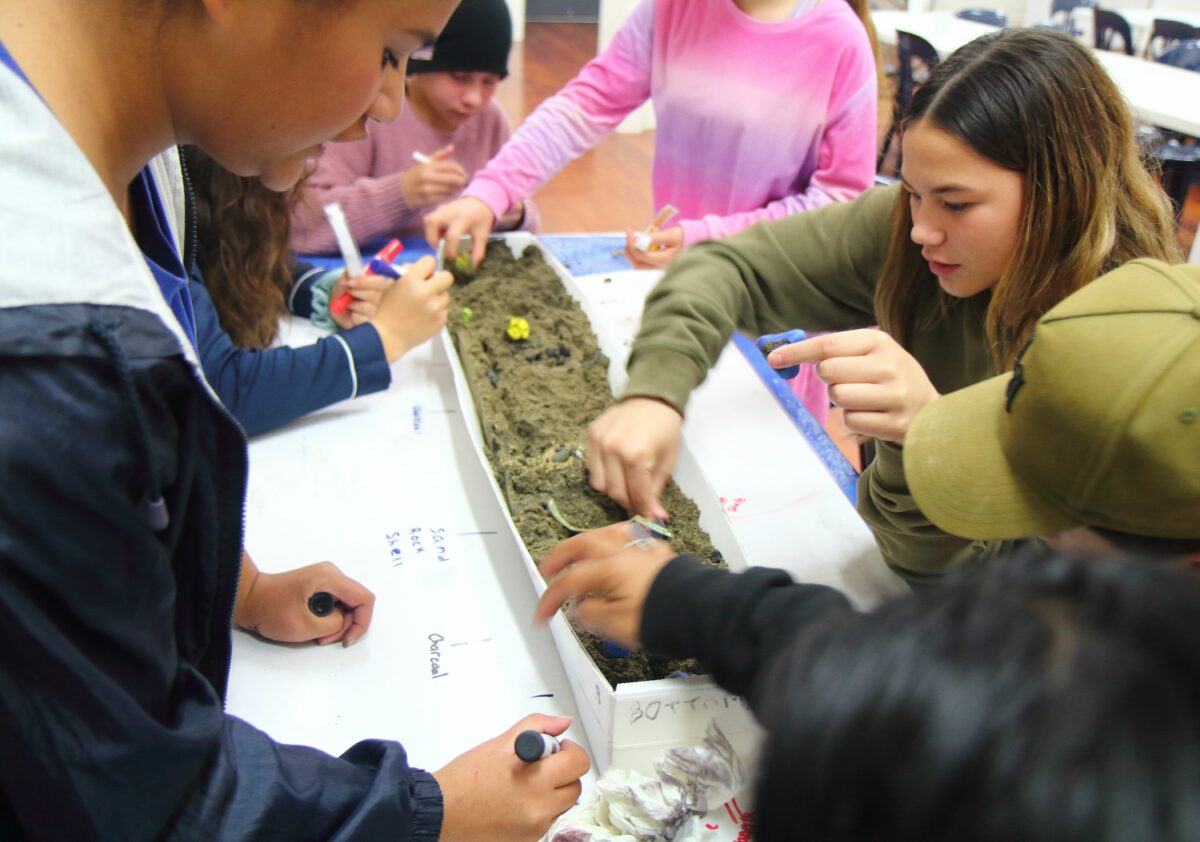To inspire Northland tamariki to consider a future career in the field of science, Tūhura Papatūānuku is designed to give students a more engaging learning experience under the guidance of professional scientists and local mātanga Māori leaders.
With hands-on exploration and whakawhanaungatanga at the heart of Tūhura Papatūānuku, the four-day wānanga were based at local marae to provide a familiar and trusted setting for learning and kōrero. This included field trips to significant local sites, hearing local pūrākau/history knowledge, and activities to explore a series of mātauranga and earth-science concepts.

This work is a collaboration between GNS scientists, including Joe Prebble, Kyle Bland, and Jess Hillman, and Te Hiku educators Joanne Murray (Te Aho Tū Roa, also a Ngā Rākau Taketake researcher), Mina Pomare-Peita, and Selena Bercic (Te Kura Taumata o Panguru), and the design of the wānanga has matured over years through growing relationships and building knowledge exchange and support within the community.

Kyle Bland says, “I take a lot of heart out of the strong relationships we have in the Far North. I think of different contributions we have as like a net, the concept of a kupenga. The more threads that you weave together within your net, the stronger your net becomes.”
A new suite of mātauranga Māori taiao resources have also been developed with funding from a Ministry of Education Regional Development grant.
The resulting “Hauhake Taiao” package, released during the 2023 wānanga, contains lesson plans on the carbon and water cycles, graphic resources, waiata, and karakia developed specifically for the community so they may continue to use these resources in the future.
GNS scientist Te Aomania Te Koha joined the two wānanga this year and says the experience was deeply valuable to her as a Māori kaipūtaiao (scientist). “Tūhura Papatūānuku brings together my love of science and the inner need I feel to serve Māori communities. The most recent noho in August 2023 was predominantly delivered in Te Reo Māori. I found it incredible to be able to kōrero Māori while also standing as a kaipūtaiao for the tamariki”.
In an article by local Te Hiku Media about the July wānanga, Te Aho Tū Roa Tuākana and co-leader of Tūhura Papatūānuku Joanne Murray sums up why the programme makes such a difference to the Northland tamariki. “This collaboration aims to provide equitable opportunities for all students, regardless of their location, and ensure they receive the best possible educational experiences. Our focus is on planting the seed of love for learning by providing these transformational learning experiences. We seek to tūhonohono ai tātou ki a tātou, tātou ki ngā mātua tūpuna, tātou ki te taiao – connect people to people and people to place”.

Joe Prebble, GNS Science
